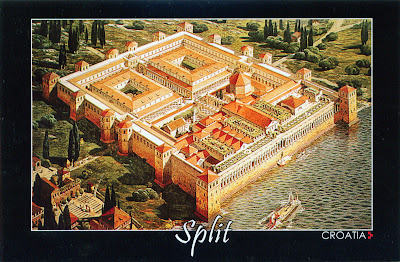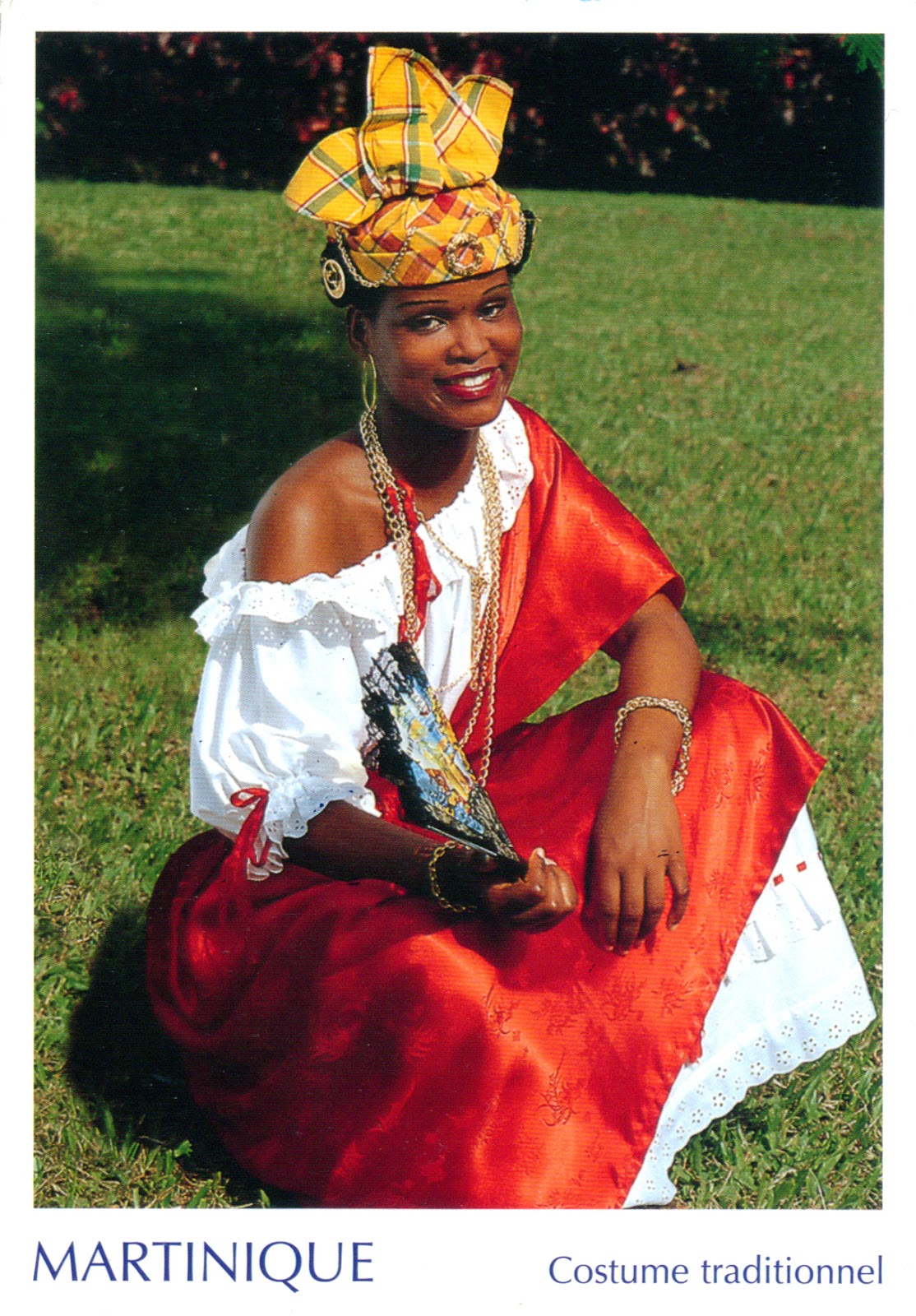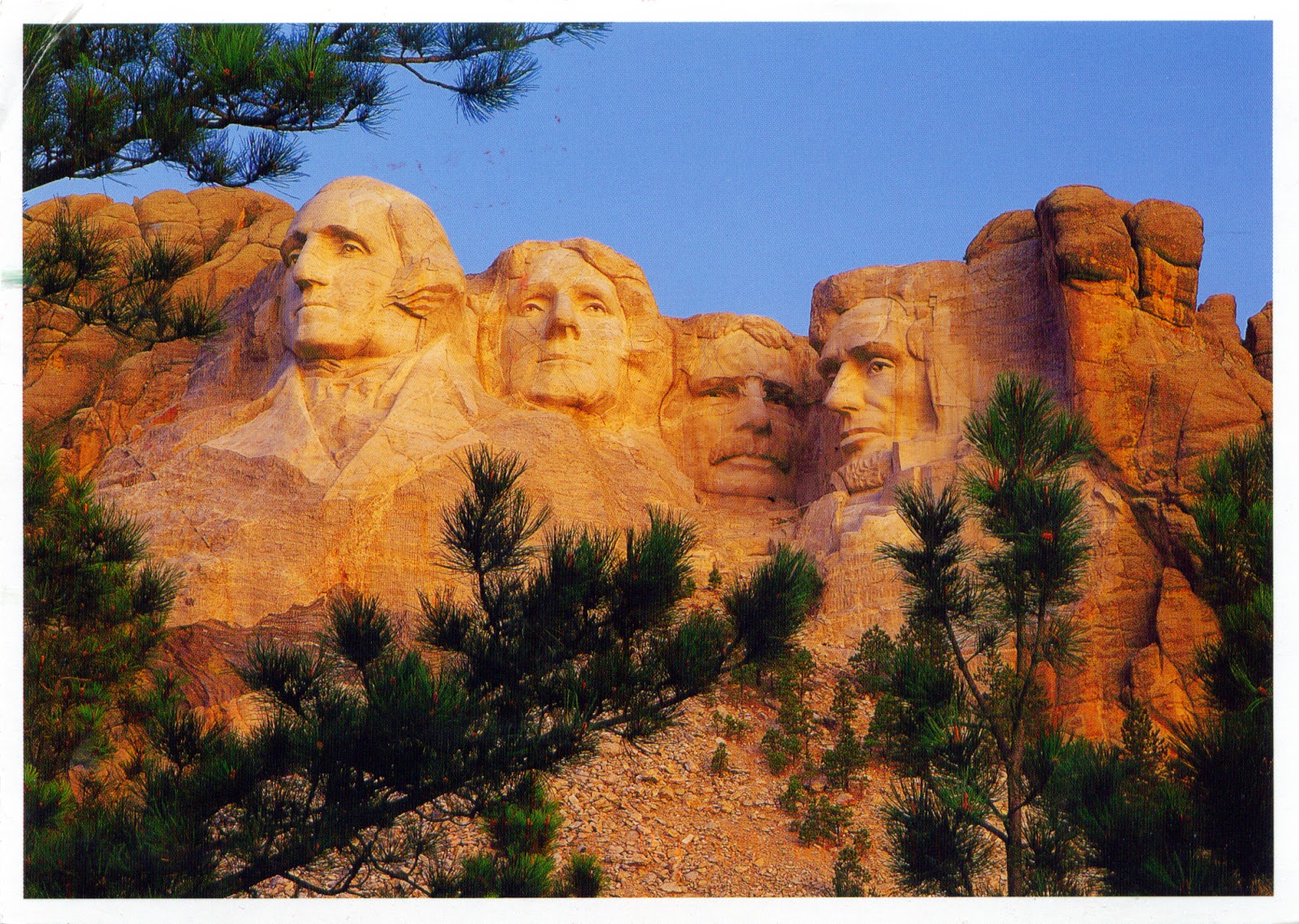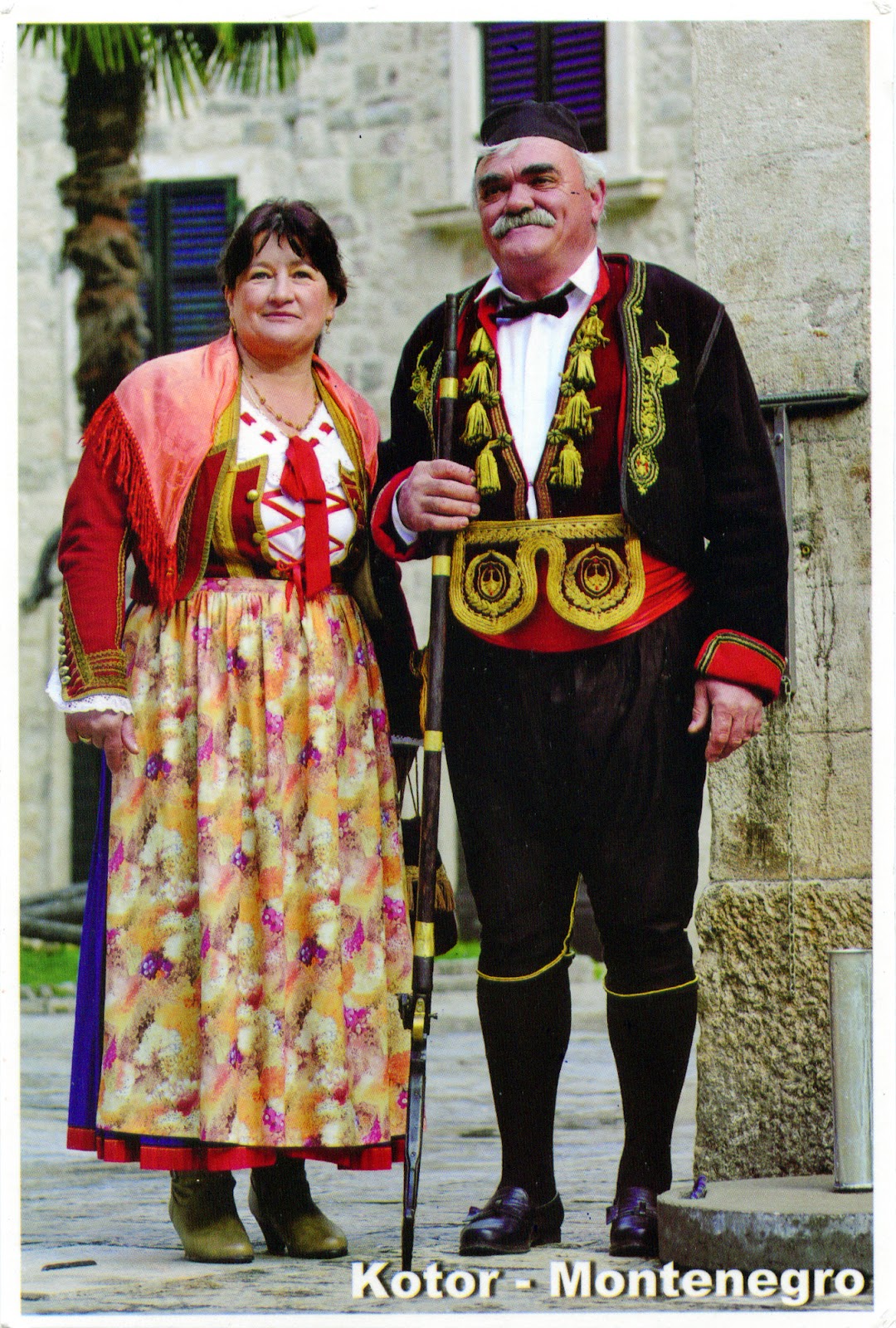July 31, 2014
1173 UNITED STATES (Florida) - Spaceship Earth and Monorail Peach in Epcot
The Walt Disney World Resort, or simply Disney World, is an entertainment complex in Lake Buena Vista, Florida, opened on October 1, 1971. The property covers 16,997 ha, in which it houses 24 themed resort hotels, four theme parks, two water parks, four golf courses, and numerous additional recreational and entertainment venues. Magic Kingdom was the first and original theme park to open in the complex followed by Epcot, Disney's Hollywood Studios, and Disney's Animal Kingdom, opened later throughout the 1980s and 1990s. Epcot (an acronym for Experimental Prototype Community of Tomorrow), the second of theme parks, spans 120 ha, more than twice the size of the Magic Kingdom park. Dedicated to the celebration of human achievement, namely technological innovation and international culture, is often referred to as a "Permanent World's Fair."
Etichete:
trains,
UNITED STATES,
UNITED STATES (Florida)
July 30, 2014
1171 JORDAN - Jerash Archaeological City (UNESCO WHS - Tentative List)
Etichete:
JORDAN,
UNESCO World Heritage Sites (tentative)
Locaţia:
Jarash, Iordania
July 29, 2014
0733, 0734, 1136, 1170 CROATIA (Split-Dalmatia) - Historical Complex of Split with the Palace of Diocletian (UNESCO WHS)
Posted on 11.07.2013, 09.07.2014, and 29.07.2014
It is said that the Diocletian's Palace is placed on the center of the city of Split. For the sake of accuracy, I must say that in fact the city was built around the palace. It was began in 293 AD, and was finished in 305, right on time to receive its owner, who retired there, becoming the first Roman Emperor to voluntarily remove himself from office. He will enjoy only 6 years by the pleasures offered by the opulent refuge, because he committed suicide in 311. After the Romans abandoned the site, the palace remained empty until the 7th century, when nearby residents fled to the walled palace to escape invading barbarians, and so was born the current city. After the Middle Ages the palace was unknown in the West until the Scottish neo-classical architect Robert Adam discovered the ruins in 18th century.
As can be seen in the first postcard, a reconstruction of the palace in its original appearance, made by the French architect and archaeologist Ernest Hébrard in 1912, the ground plan of the assembly is an irregular rectangle (approximately 160m x 190m), with towers on three sides. The palace is enclosed by walls, and at times, it housed over 9000 people. Only the southern facade, the one seaward, was unfortified. The palace combines therefore the qualities of a luxurious villa with those of a military camp. A monumental gate in the middle of each of the walls led to an enclosed courtyard. The southern sea gate (the Porta Aenea) was simpler in shape and dimensions than the other three. The transverse road (decumanus) linking the eastern gate (the Silver Gate or Porta Argentea) and western gate (the Iron Gate or Porta Ferrea) divided the complex into two-halves.
A monumental court, called the Peristyle, formed the northern access to the imperial apartments. It also gave access to Diocletian's mausoleum on the east (now Cathedral of St. Domnius), and to three temples on the west (two of which are now lost, the third having become a baptistery, originally being the temple of Jupiter). The northern half of the palace, divided in two parts by the main north-south street (cardo) leading from the Golden Gate (Porta Aurea) to the Peristyle, is less well preserved. The palace was built of white local limestone, marble of high quality, tuff and brick, and was decorated with numerous 3500 year old granite sphinxes, originating from the site of Egyptian Pharaoh Thutmose III. Only three have survived the centuries. In the left is the Bell Tower, constructed in the year 1100 AD, in the Romanesque style, the city's main symbol.
The Cathedral of St. Domnius, known locally as the Sveti Dujam, is the Catholic cathedral in Split, actually a complex of a church and a bell tower. Strictly the church is dedicated to the Virgin Mary, and the bell tower to Saint Duje. The cathedral, consecrated at the turn of the 7th century, is regarded as one of the oldest Catholic cathedral in the world that remains in use in its original structure. The structure itself, built in 305 as the Mausoleum of Diocletian, is the second oldest structure used by any Christian Cathedral. The Bell Tower was constructed in the year 1100, in the Romanesque style.
1169 MONGOLIA (Ulaanbaatar) - The statue of Sükhbaatar in Ulaanbaatar
The central square of Ulaanbaatar, the capital city of Mongolia, is Sükhbaatar Square, named after the equestrian statue of Damdin Sükhbaatar, located directly in front of the Saaral Ordon (Government Palace). Sükhbaatar (literally meaning "Axe hero") was a founding member of the Mongolian People's Party and leader of the Mongolian partisan army that liberated Khüree (then called Ulaanbaatar) during the Outer Mongolian Revolution of 1921. Enshrined as the "Father of Mongolia's Revolution", he is remembered as one of the most important figures in Mongolia's struggle for independence. He had close relations with the last Khaan of Mongolia, Bogd Gegeen, and didn't intend to spread Bolshevik ideas in Mongolia. Therefore, his death at only 30 years old aroused suspicion. The words he apparently proclaimed at the time are engraved on the bottom of the statue: "If we, the whole people, unite in our common effort and common will, there will be nothing in the world that we cannot achieve, that we will not have learnt or failed to do."
Etichete:
MONGOLIA
Locaţia:
Ulaanbaatar, Mongolia
July 28, 2014
1168 UNITED ARAB EMIRATES - Traditional arabian horse rider
Admired and desired, immortalised by pen and brush, the Arabian horse had, arguably, more influence on civilisation than any other equine breed. The nomadic Bedouin were the first who tame the wild Arabian, but they treated it as a friend and ally rather than a beast of burden. The camel was a means of survival, providing meat, milk, leather and transportation on the long treks across the desert sands.
Locaţia:
Emiratele Arabe Unite
July 27, 2014
1167 BULGARIA (Blagoevgrad) - A woman from Gotse Delchev with traditional headdress
I wrote here a little about the bulgarian traditional clothes, and about the main bulgarian ethnographic regions, so I don't insist for now. The woman in the postcard is from Gotse Delchev, in the south-west of the country. Prior to the 20th century, for weddings the hair was arranged in complex styles formed with multiple plaits; in the north and southwest, brides wore a specific headband made of decorative metal chains forming a crown. Married women covered their heads with scarves of colored silk or cotton (which could be square, triangular or rectangular, small or large), sometimes worn over a small hat. Bridal headdresses usually had a large square headscarf or scarf (mesal) 2m to 3m long and decorated with embroidery and long fringes on both ends. The headscarf was worn over cylinder or cone shape low hats. It were folded in the middle and placed on head, or could be worn over a pad, with the ends hanging loose at back. The style of jewelry worn with Bulgarian ethnic dress was strongly influenced by Ottoman fashions but with certain ancient elements, such as the over-the-ear pendants. During the period of national revival, workshops in the prosperous towns made earrings, bracelets, necklaces, and rings of silver filigree or cast copper or silver, often decorated with enamel.
Etichete:
BULGARIA,
EU - EUROPE,
EU-Bulgaria,
stamps (complete series)
Locaţia:
Goțe Delcev, Bulgaria
1163-1166 NETHERLANDS (Aruba) - California Lighthouse
Located near Arashi Beach on the northwest tip of Aruba, in the area known as Hudishibana, California Lighthouse was named for the British wooden steamship California, which wrecked nearby on September 23, 1891, after sailing from Liverpool toward Central America. On board, passengers were partying hard when the wreck occurred. Meanwhile, the crew was more practical, tossing cargo overboard as the sinking vessel hit the coast so the merchandise could be sold in Oranjestad - or so the story goes.
Two decades later, a French architect designed the striking edifice that came to be known as the California Lighthouse. Construction on the lighthouse began in 1914 and took two years to complete. The tower was built using stone blocks quarried in the area. Meanwhile, the top - which stands at 30m high - was made of metal to house the mood-altering light that shines onto the landscape today. It is conical, but has an octagonal base and it is unpainted (sand coloured). Around the lighthouse are acres of stoned-filled flat land, and a area called California White Sand Dunes.
It was formerly open to the public until a suicide occurred, which prompted authorities to restrict public access to the lighthouse. Now it is a major tourist attraction, because any time of day or night is a great time to visit the lighthouse for a 360 degree view, but the sunset is hands down the right time of day to be there as the big orange ball of fire gently dips into the Caribbean Sea. Right next to the California Lighthouse is a very good Italian restaurant named La Trattoria El Faro Blanco (The White Lighthouse Restaurant).
Etichete:
ARUBA,
DUTCH CARIBBEAN,
Lighthouses,
NETHERLANDS,
NETHERLANDS (Aruba)
Locaţia:
California Lighthouse, Noord, Aruba
July 26, 2014
1162 UNITED STATES (Georgia) - Georgia map
Located in the southeastern United States, on the shore of the Atlantic Ocean, between Florida, South Carolina, Alabama, Tennessee and North Carolina, Georgia, also known as Peach State, was established in 1732, the last of the original Thirteen Colonies. Named after King George II of Great Britain, it was the fourth state to ratify the U.S. Constitution, but also one of the original seven Confederate states, and the last one to be restored to the Union, on July 15, 1870. The state's capital and its most populous city is Atlanta, built in 1840 as Terminus, the "zero milepost" of Western and Atlantic Railroad. The northern part of the state is in the Blue Ridge Mountains, a mountain range in the Appalachian Mountain system. The central Piedmont extends from the foothills to the fall line, where the rivers cascade down in elevation to the continental coastal plain of the southern part of the state. If Georgia were a stand-alone country, it would be the 28th largest economy in the world. The state symbols are Brown Thrasher, Cherokee Rose and White Oak, its motto is "Wisdom, Justice, and Moderation", and its song is Georgia on my mind.
Locaţia:
Georgia, Statele Unite ale Americii
July 25, 2014
1161 BANGLADESH (Dhaka) - National Martyrs' Memorial in Savar
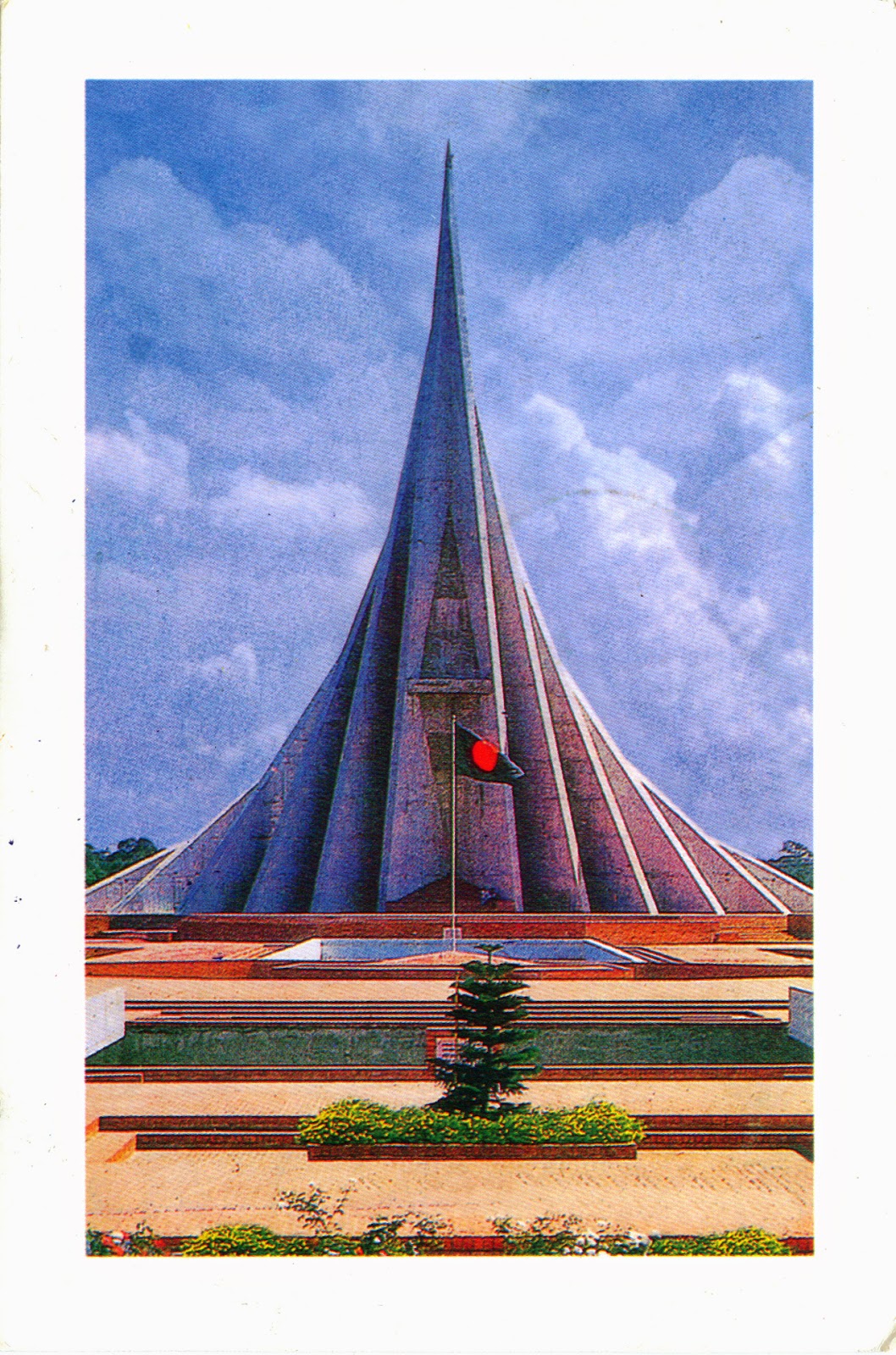 |
| 1161 National Martyrs' Memorial in Savar |
Located at about 35km northwest of Dhaka, the capital city of the country, Jatiyo Smriti Soudho, the National Monument for the Martyrs of the Bangladesh Liberation War of 1971 (which brought independence and separated Bangladesh from Pakistan) was designed by Syed Mainul Hossain and inaugurated at 16 December, 1982. The monument is composed of 7 isosceles triangular pyramid shaped structures, with the middle one being the tallest. The highest point of the monument is 50m. There is an artificial lake, and several mass graves in front of the main monument. From the main gate one can see the monument axially, but to reach there one has to walk through different levels of red pavements and cross a lake - all these representing the struggle for independence.
1160 CAMBODIA (Siem Reap) - Traditional Apsara dancer
Apsaras are female spirits of the clouds and waters in Hindu and Buddhist mythology, assimilated to some extent with nymphs from european mythology. They are youthful and elegant, and superb in the art of dancing, being associated with fertility rites. They are often the wives of the Gandharvas, the court musicians of Indra. They dance to the music made by the Gandharvas, usually in the palaces of the gods, entertain and sometimes seduce gods and men. They are said to be able to change their shape at will, and rule over the fortunes of gaming and gambling. Apsaras represent an important motif in the stone bas-reliefs of the Angkorian temples in Cambodia, about which I wrote here.
Etichete:
AS - ASIA,
AS-Cambodia,
CAMBODIA
July 23, 2014
1159 FRANCE (Martinique) - Woman dressed into traditional Creole clothes in Martinique
Located in Lesser Antilles in the eastern Caribbean Sea, Martinique, as also Guadeloupe, is an overseas region of France, so its culture blends French and Caribbean influences. The city of Saint-Pierre was often referred to as the "Paris of the Lesser Antilles". Most of Martinique's population is descended from enslaved Africans brought to work on sugar plantations during the colonial era, generally mixed with some French, Amerindian (Carib people), Indian (Tamil), Lebanese or Chinese ancestry. Many Martinicans speak, in addition to French (official), Martiniquan Creole, a subdivision of Antillean Creole that is virtually identical to the varieties spoken in Saint Lucia and Dominica.
Etichete:
AM - AMERICAS,
AM-Martinique,
FRANCE,
FRANCE (DOM-TOM),
FRANCE (Martinique),
MARTINIQUE
Locaţia:
Martinica
July 22, 2014
1158 MADAGASCAR - Les baobabs amoureux in Morondava
Once upon a time, a young man and a young woman of two nearby villages fell in love from each other. Unfortunately both had already an assigned partner and had to marry separately in their respective villages. However, the impossible couple dreamed of a common eternity life and having a child together and secretly asked help to their god. Both baobabs were born and now live they for eternity as one as the couple always wished. So says the legend that appeared the two baobabs known as Les baobabs amoureux (the Lovers baobabs), located at 7km to the northwest of the famous Avenue or Alley of the Baobabs, a prominent group of baobab trees lining the dirt road between Morondava and Belon'i Tsiribihina in the Menabe region in western Madagascar. Along the 260m of the avenue are 20-25 trees about 30m in height, known locally as renala (Malagasy for "mother of the forest"), a legacy of the dense tropical forests that once thrived on Madagascar.
Etichete:
MADAGASCAR,
Plants
Locaţia:
Morondava, Madagascar
July 21, 2014
1157 POLAND - The map and the flag of the country
July 20, 2014
1155, 1156 UNITED STATES (South Dakota) - Presidents and Founding Fathers
The Mount Rushmore National Memorial is a sculpture carved into the granite face of Mount Rushmore (Lakota Sioux name: Six Grandfathers) near Keystone. Sculpted by Danish-American Gutzon Borglum and his son, Lincoln Borglum, it features 18 m sculptures of the heads of four United States presidents: George Washington (1732–1799), Thomas Jefferson (1743–1826), Theodore Roosevelt (1858–1919), and Abraham Lincoln (1809–1865). Historian Doane Robinson is credited with conceiving the idea of this sculpture, in order to promote tourism in the region. Construction on the memorial began in 1927, and the presidents' faces were completed between 1934 and 1939. Upon Gutzon Borglum's death in March 1941, his son Lincoln Borglum took over construction. Although the initial concept called for each president to be depicted from head to waist, lack of funding forced construction to end in late October 1941.
Mount Rushmore is controversial among Native Americans because the United States seized the area from the Lakota tribe after the Great Sioux War of 1876. Members of the American Indian Movement led an occupation of the monument in 1971, naming it Mount Crazy Horse. In 2004, the first Native American superintendent of the park was appointed. Gerard Baker has stated that he will open up more "avenues of interpretation", and that the four presidents are "only one avenue and only one focus." The Crazy Horse Memorial is being constructed elsewhere in the Black Hills to commemorate the famous Native American leader and as a response to Mount Rushmore. It is intended to be larger than Mount Rushmore and has the support of Lakota chiefs; the Crazy Horse Memorial Foundation has rejected offers of federal funds.
July 19, 2014
1151 UNITED ARAB EMIRATES (Abu Dhabi) - Sheikh Zayed Grand Mosque
Built between 1996 and 2007 in Abu Dhabi, the capital city of the UAE, Sheikh Zayed Grand Mosque is the eighth largest mosque in the world (with a capacity for 40,000 worshippers), and is considered to be the key for worship in the country. It was initiated by the first Ra’îs (president) of the UAE, HH Sheikh Zayed bin Sultan Al Nahyan, who wanted to establish a structure which unites the cultural diversity of Islamic world, the historical and modern values of architecture and art.
July 18, 2014
1150 MONTENEGRO (Kotor) - A couple in traditional costumes
Slavs (including Croats and Serbs) have lived in the area of Montenegro since the 6th and 7th centuries in the medieval principalities of Doclea and Zeta, and the area got its present name (Montenegrin: Crna Gora, which means Black Mountain) during the rule of the Crnojević dynasty. It was part of medieval Serbia during 13th century and first half of the 14th century, but Ottoman conquest of the Balkans resulted in separation from Serbia and re-emergence of Zeta. In the 19th century national romanticism among the South Slavs fueled the desire for re-unification. Regarding the linguistic and ethnic identity of Montenegrins, there is an ongoing controversy, some supporting the ideea that they aren't a distinct group, but only a subgroup of Serbian people. Whatever the truth, the many similarities between Serbs and Montenegrins not be questioned. The Bay of Kotor, known also as Boka, is a winding bay of the Adriatic Sea, in fact a ria of the disintegrated Bokelj River which used to run from the high mountain plateaus of Orjen. The inhabitants of Boka and adjacent regions are the Bokelj or Bokez people, who are an ethnic South Slavic community, many of whom nationally identify as being Montenegrin, Serb or Croat, or others. Most are Eastern Orthodox, while some are Roman Catholics.
Etichete:
EU - EUROPE,
EU-Montenegro,
MONTENEGRO
Locaţia:
Kotor, Muntenegru
0398, 0509, 0862, 1148, 1149 BRAZIL (Paraná) - Iguazú Falls (UNESCO WHS)
Posted on 28.11.2012, 18.02.2013, 15.11.2013, and 18.07.2014
"It is said that many years ago, there was a big and monstrous serpent which lived in the Iguazú river and its name was Boi. Once per year, the guaranies had to sacrifice a beautiful maid as an offer to Boi, by throwing her to the river. All the tribes, including the ones which lived far away, were invited for this ceremony. One year, a young boy whose name was Tarobá, became leader of the tribe. When Tarobá knew the beautiful maid Naipí was the chosen girl for the sacrifice, rebelled to elderly members of the tribe and tried in vain to convince them of not offering her. In order to save Naipí, he decided to kidnap her the night before the sacrifice."
"So he put her on a canoe and escaped by the river. But Boi knew about this; she became furious and her anger was so deep that she vent over her back, split the river forming the falls catching Naipí and Tarobá. Boi turned Tarobá into trees, that we can observe from the upper circuit, and the long hair of the beautiful Naipí into the falls. Then Boi submerged in the Devil's Throat and from this place she watches Naipí and Tarobá never come together again... however, on sunny days the rainbow surpasses Boi's power and join them..."
Taller than Niagara Falls, twice as wide with 275 cascades spread in a horsehoe shape over 2.7 kilometres of the Iguazu River, Iguazú Falls (named also Iguassu Falls or Iguaçu Falls; in Portuguese Cataratas do Iguaçu, and in Spanish Cataratas del Iguazú, from the Guarani words for Big Water) is actually the result of a volcanic eruption which left yet another large crack in the earth. Lying on the Argentina - Brazil border, in the place where the Iguazu River tumbles over the edge of the Paraná Plateau, 23 kilometres upriver from the Iguazu's confluence with the Paraná River, it was discovered by the Spanish conquistador Álvar Núñez Cabeza de Vaca in 1541 (do you remember the fascinating movie The Mission?). In March 1944, when she saw it, Eleanor Roosevelt exclaimed "Poor Niagara!" It seems to be only a legend, because Eleanor Roosevelt never saw this waterfall (read here), but it is as beautiful as that from the beginning of my post.
The waterfall is shared by the Iguazú National Park (Argentina) and Iguaçu National Park (Brazil), the two parks being designated UNESCO World Heritage Sites in 1984 and 1987, respectively, because "conserve one of the largest and most spectacular waterfalls in the world comprised of a system of numerous cascades and rapids and almost three kilometres wide within the setting of a lush and diverse sub-tropical broadleaf forest. The permanent spray from the cataracts forms impressive clouds that soak the forested islands and river banks resulting in a visually stunning and constantly changing interface between land and water."
The two parks also "forms the largest single protected remnant of the Paranaense subtropical rainforest, which belongs to the Interior Atlantic Forest. The rich biodiversity includes over 2000 species of plants, 400 species of birds and possibly as many as 80 mammals, as well as countless invertebrate species." In 2011 it was announced as one of the seven winners of the New Seven Wonders of Nature.
Etichete:
BRAZIL,
UNESCO World Heritage Sites,
Waterfalls
Locaţia:
Iguazu Falls - Argentina
Subscribe to:
Posts (Atom)




